.

Beach at Ohio, or "Sunshine" Key
The edge of
the sea is a strange and beautiful place. All through the long history
of Earth it has been an area of unrest where waves have broken heavily
against the land, where the tides have pressed forward over the
continents, receded and then returned. For no two successive days is the
shore line precisely the same. Not only do the tides advance and
retreat in their eternal rhythms, but the level of the sea itself is
never at rest. It rises or falls as the glaciers melt or grow, as the
floor of the deep ocean basins shifts under its increasing load of
sediments, or as the earth's crust along the continental margins warps
up or down in adjustment to strain and tension. Today a little more land
may belong to the sea, tomorrow a little less. Always the edge of the
sea remains an elusive and indefinable boundary.
-- Rachel Carson: from The Edge of the Sea (1955), researched while camping at Ohio, or "Sunshine" Key, Florida
-- Rachel Carson: from The Edge of the Sea (1955), researched while camping at Ohio, or "Sunshine" Key, Florida
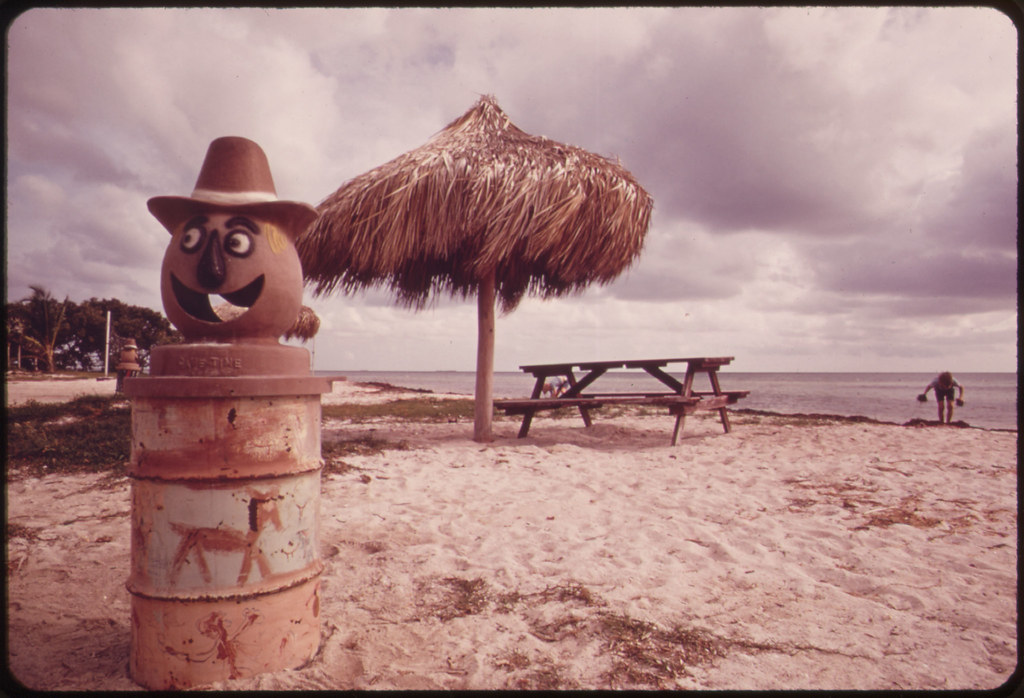
Beach at Ohio, or "Sunshine" Key
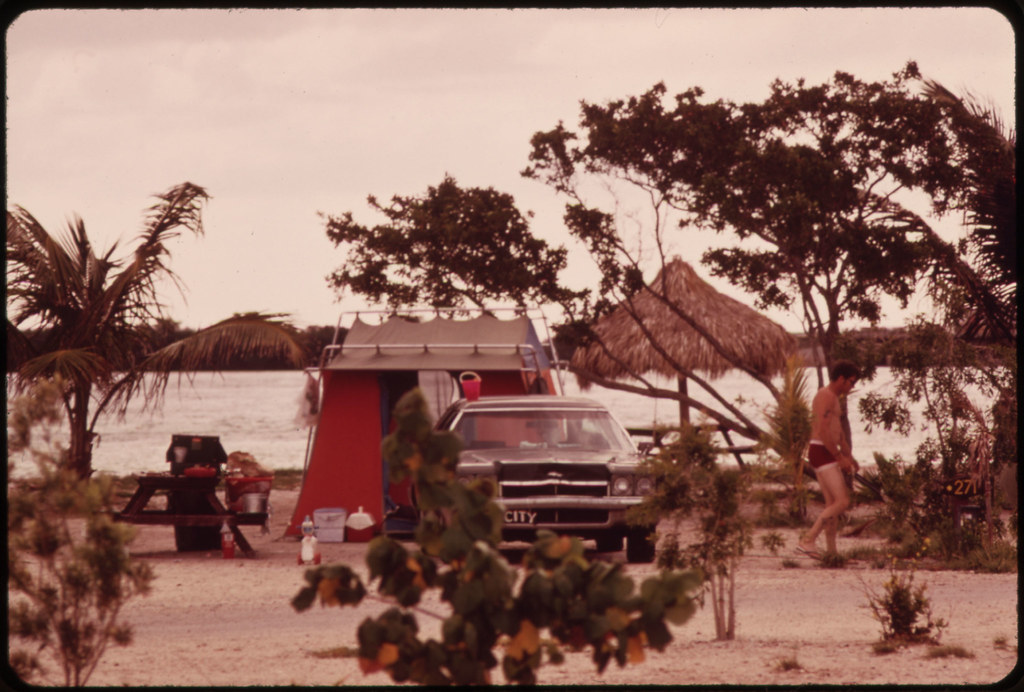
Campsite at Ohio, or "Sunshine" Key. Extensive dredging, filling and defoliation have taken place to make way for a "Travel-Trailer" camp.
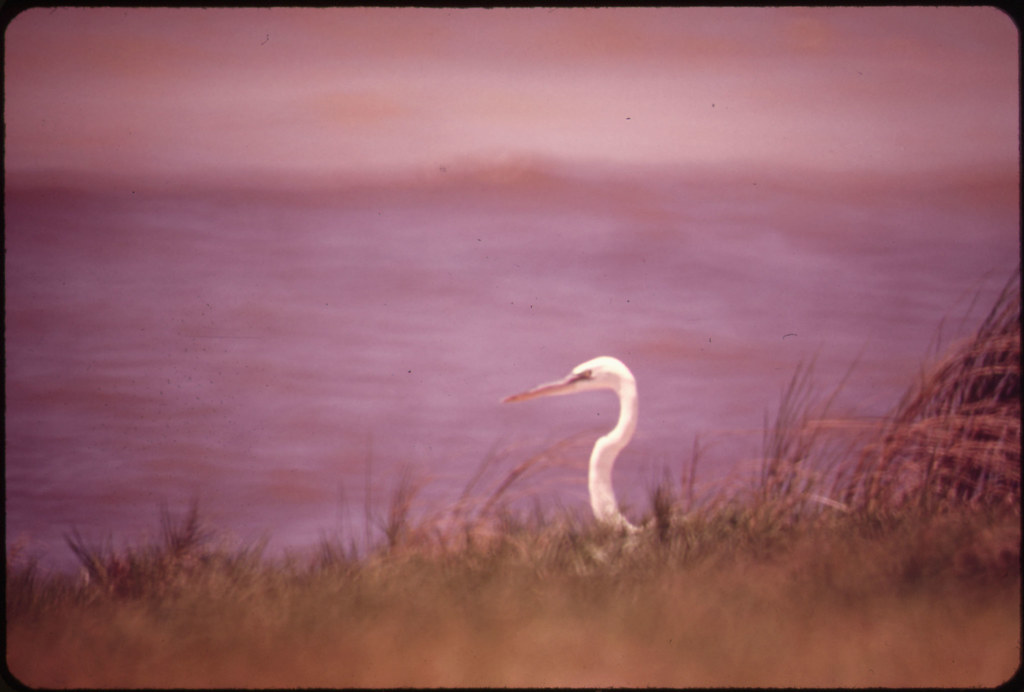
White Heron near Marathon in the Central Florida Keys
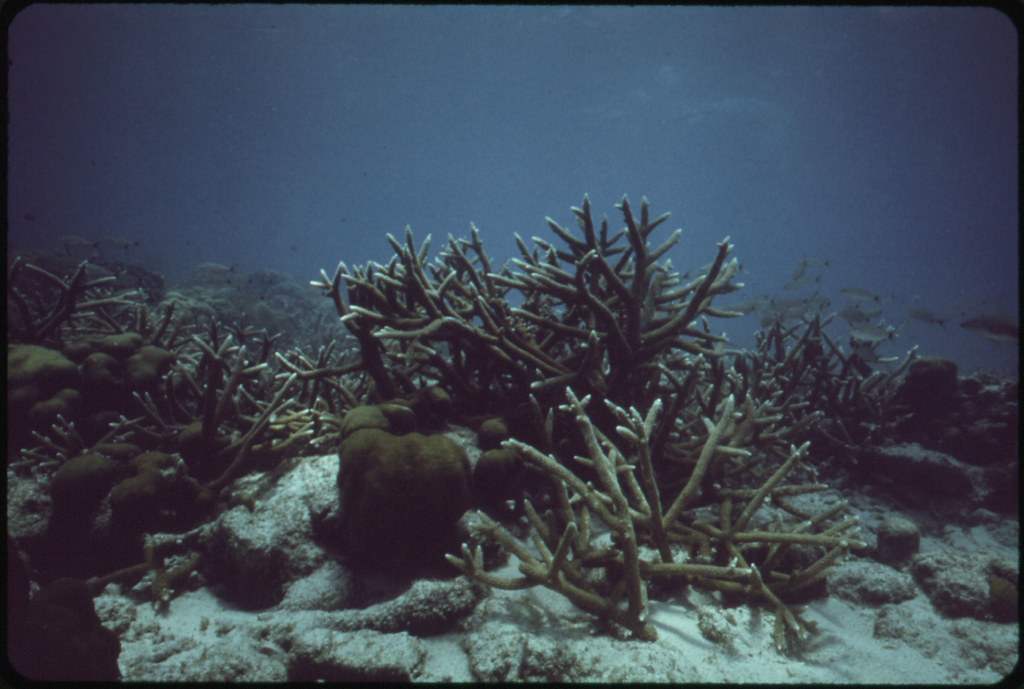
One of the 40 or more species of coral at John Pennekamp Coral Reef State Park, a few miles off Key Largo
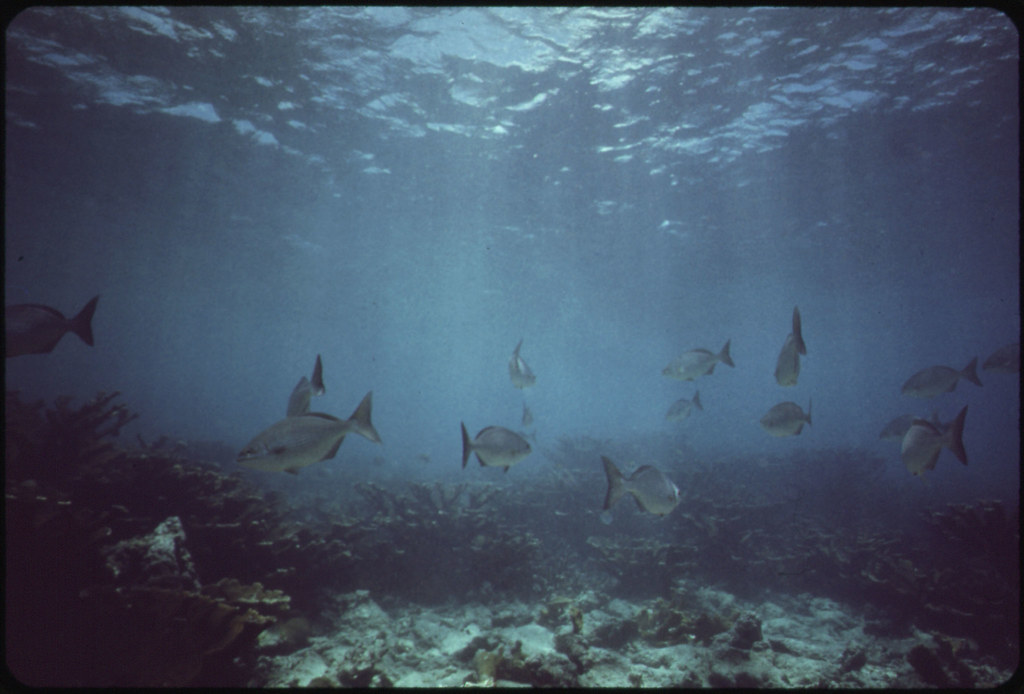
Coral and marine life at John Pennekamp Coral Reef State Park, a few miles off Key Largo
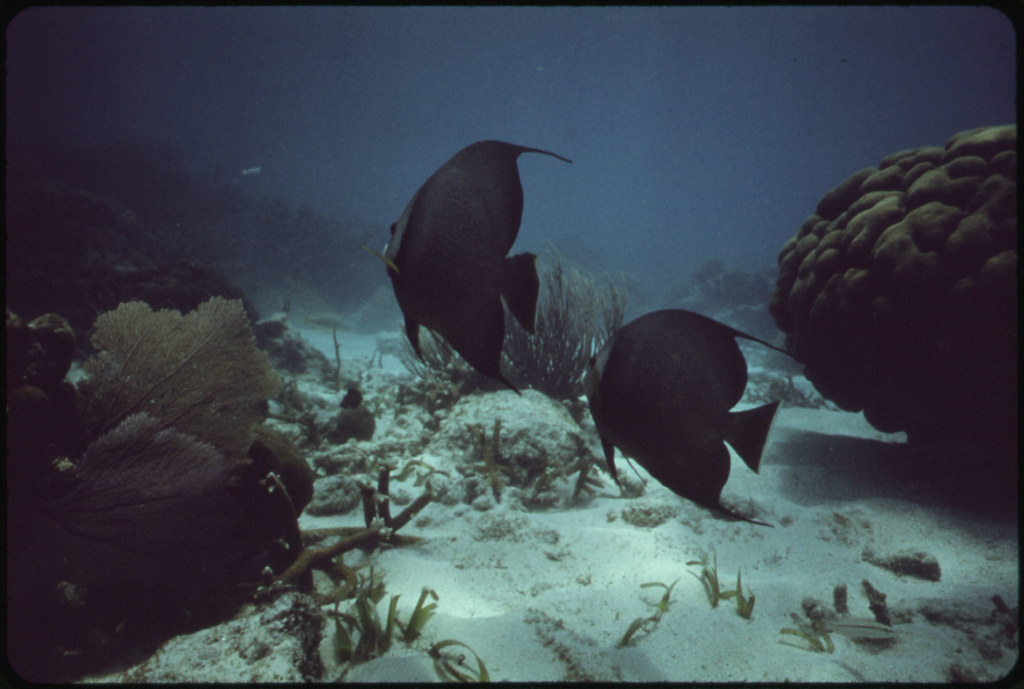
A few of the many species of coral and marine life at John Pennekamp Coral Reef State Park, a few miles off Key Largo. The fish are Grey Angle Fish.
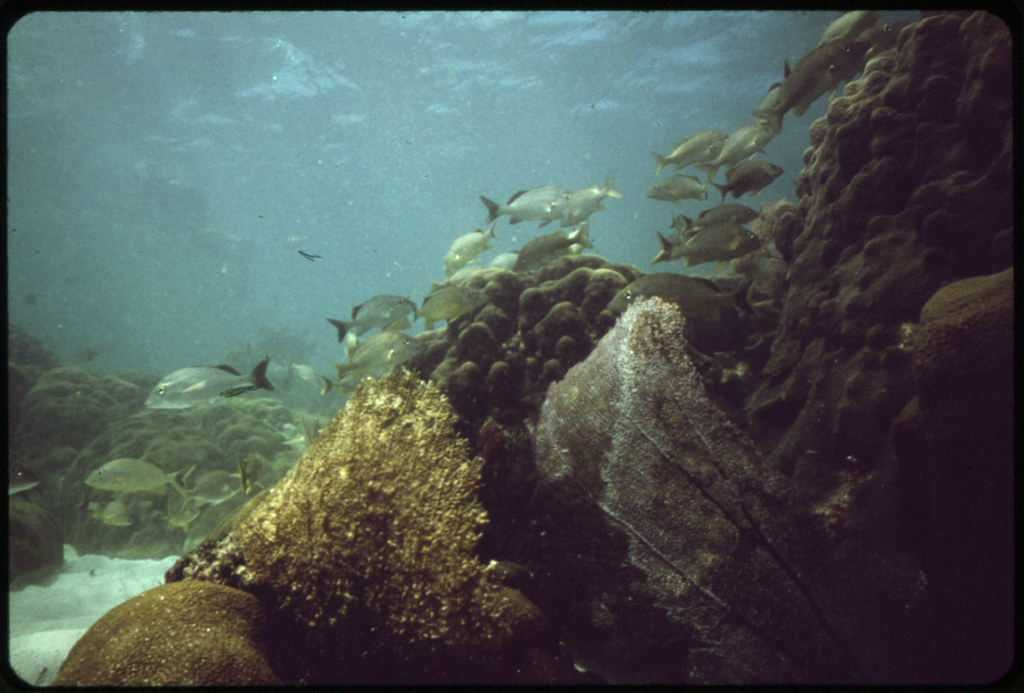
Coral and sea life in the John Pennekamp Coral Reef State Park at Key Largo is photographed at a depth of 12 feet
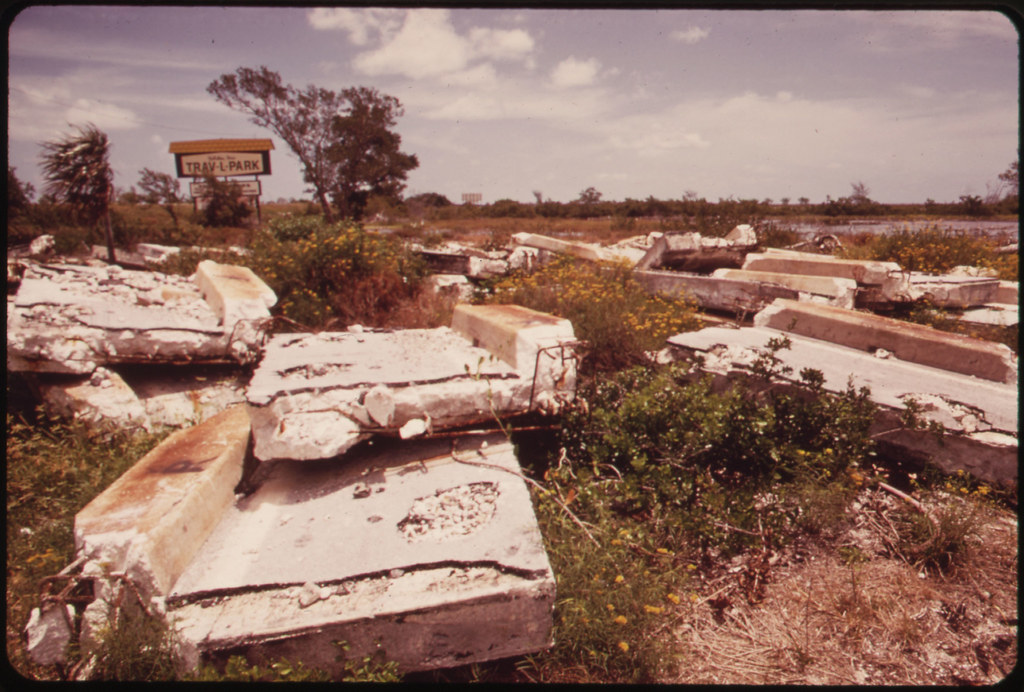
Blocks of concrete from road repair have been dumped on a partially cleared section of Ohio, or "Sunshine" Key. Half of this small Key has been dredged and filled to make way for a "Travel-Trailer" camp.
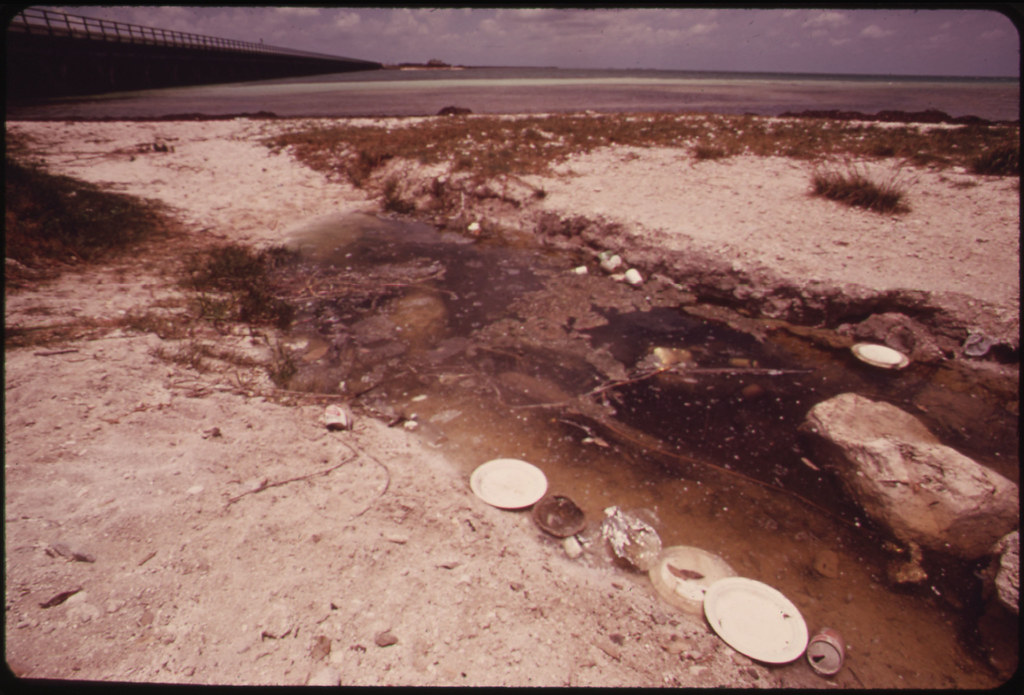
Cleared land on Ohio Key, with a section of the Overseas Highway in the background. On the other side of the road, land has been cleared to make room for a "Travel-Trailer" camp. This small Key has changed significantly in the years since Rachel Carson camped here to do research for her book, the Edge of the Sea (1955).
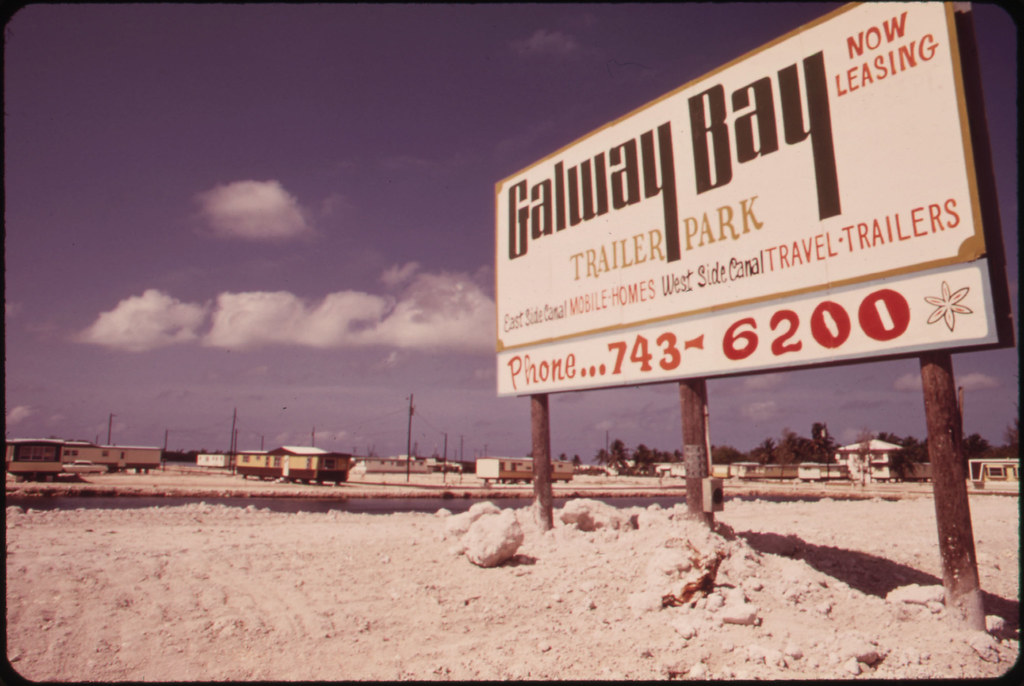
Trailer park under construction at Marathon, Vaca Key
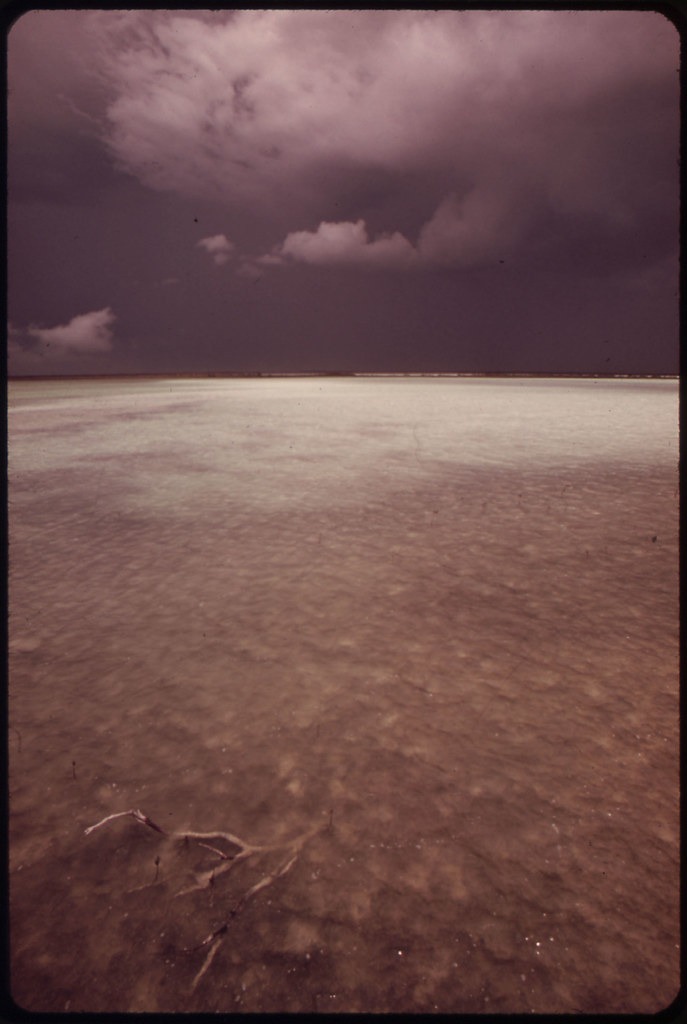
A stormy sky gives the camera a clear view of the clouds of silt in the waters off Saddle Bunch Keys in the Lower Florida Keys. Silt occurs naturally in the formation of coral reefs, but the amount shown here could only be produced by the extensive dredging of the land developers.
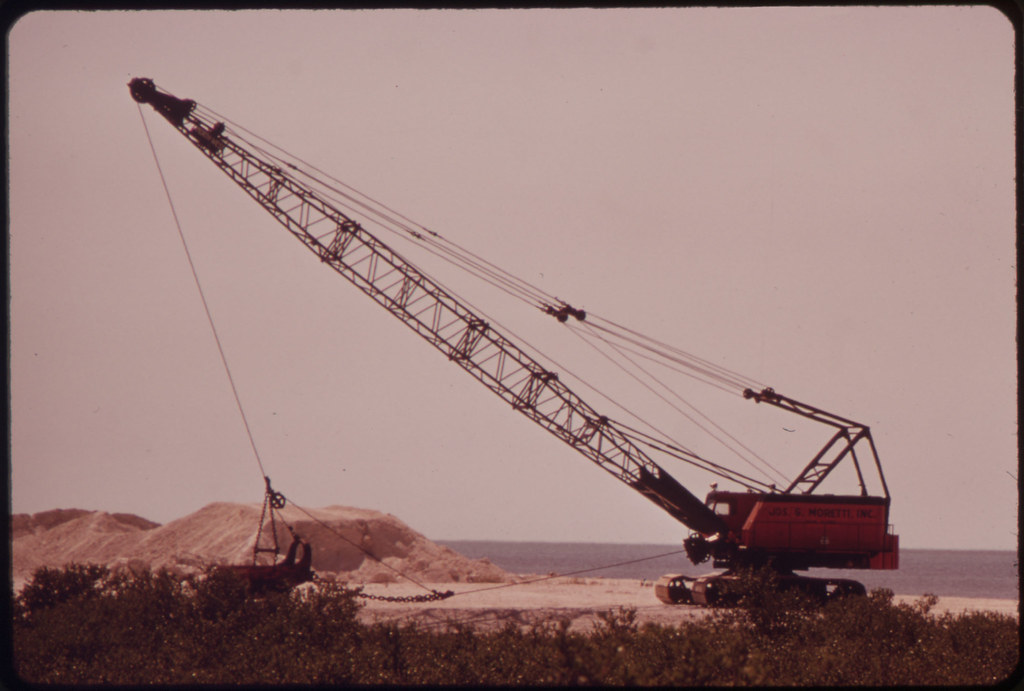
Dragline doing some dredging and filling near Long Key in the Central Florida Keys
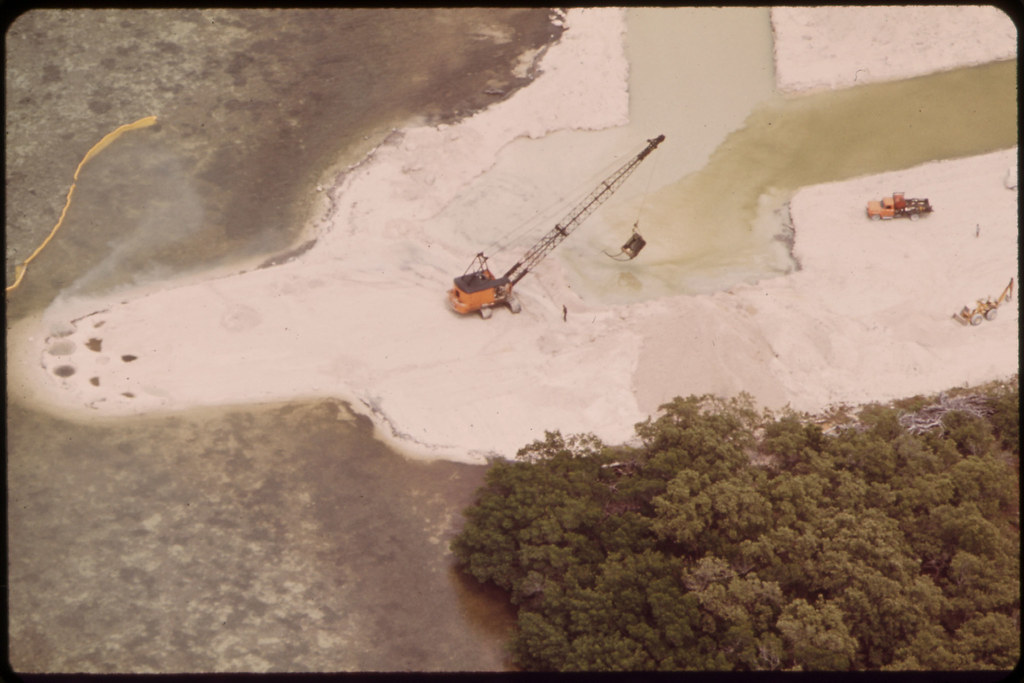
Dredging land under development at Big Pine Key. Note that the canal shown here Is "plugged" from exiting Into the Gulf of Mexico. Permits to open artificial waterways to the sea are hard to obtain. Developers dig the canals anyway, but stop them just short of open water. Buyers assume that the "plugs" are temporary.
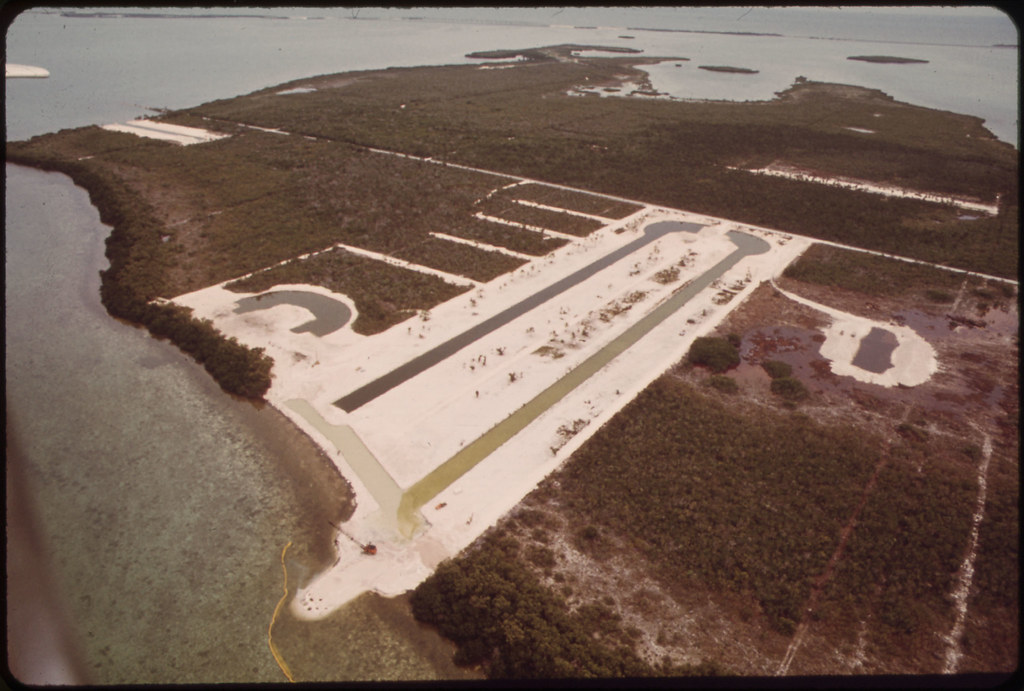
Land development at Big Pine Key, showing the typical scraped land and "plugged" canals of the developers in this area. Permits to open artificial waterways to the sea are hard to get. Developers dig the canals anyway, but stop them just short of open water. Buyers assume that these "plugs" will eventually be removed.
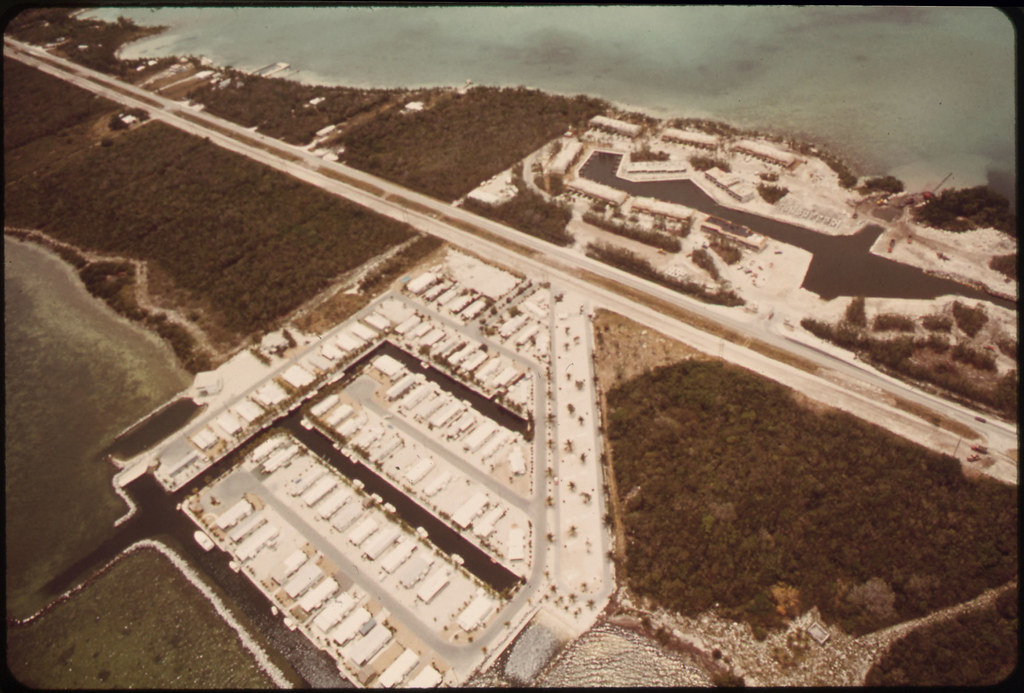
Permanent trailer park in Plantation Key. This park Is typical of land development in the Florida Keys.
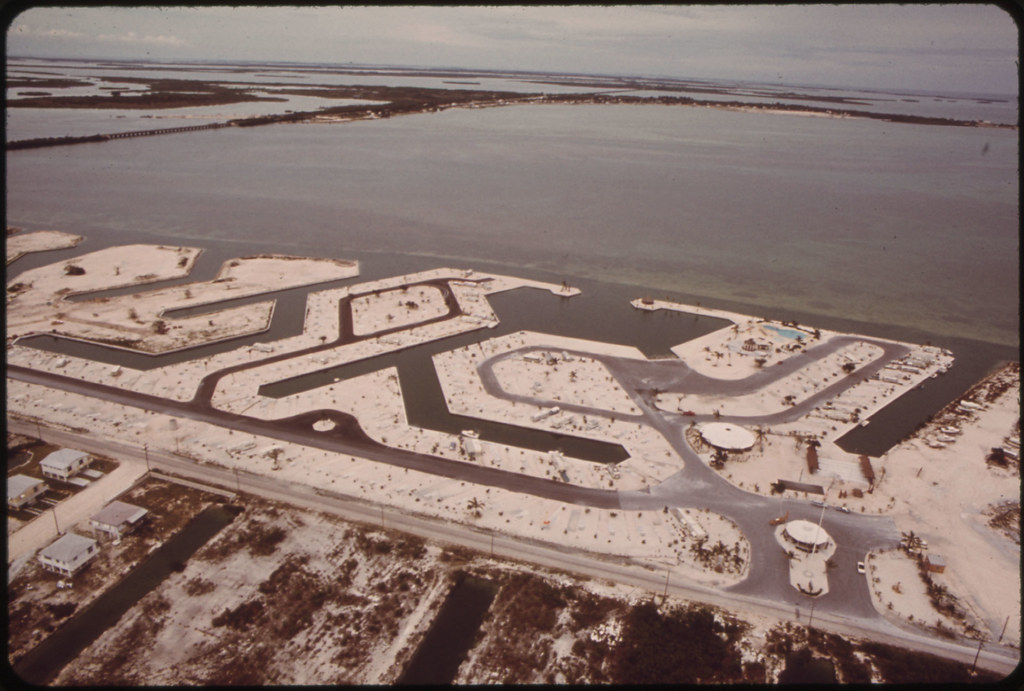
Natural waterways and green groves of Cudjoe Key give way to the geometric canals and denuded land of the developers. This is a trailer camp called "Venture Out." It is typical of land development on the smaller Florida Keys.

Looking seaward from Ohio, or "Sunshine" Key. Much of the small island has been dredged and filled for commercial development. As a result, water clarity has diminished. This small Key has changed significantly in the years since Rachel Carson camped here to do research for her book, the Edge of the Sea (1955).
Photos by Flip Schulte (1930-2008), 1973, from the DOCUMERICA series, an Environmental Protection Agency program to photographically document subjects of environmental concern, compiled 1972-1977 (U.S. National Archives)
I remember her book, Silent Spring, and how my mom thought we would all begin to pay attention to what we were doing to the environment. So much misplaced hope, I guess. Or faith. But then I think more will belong to the sea, though more of the sea will be dead. I was just reading that 4.5 million sea animals are killed as "bycatch" in longline fishing each year--including sharks, marlins, sea turtles, albatrosses, dolphins, whales . . . And then there's trawling --marine clear-cutting, done to get shrimp. And then there is the effect of our agricultural waste creating dead zones. Okay, I should stop.
ReplyDeleteNin,
ReplyDeleteIt was the popular success of Carson's great marine biology work -- the sea trilogy as it's called -- that made it possible for her to do Silent Spring; and that book in turn probably did more than any other single work to advance public concern about the impact that human activity could have on the environment. The influence of her work was immense; the EPA may well owe its existence to that influence, and one of the most impressive projects of the early days of that Agency was the documentary photo-survey from which these pictures come. The captions show that Flip Schulte had her work specifically in mind in his trip through the Keys, and certainly there is an elegiac tone to his portfolio, showing as it does the wholesale destruction of natural habitats "cleared" away by that monster Development which devours all in its path. Returning to the scene of her work, he saw that it had been turned into one gigantic tacky trailer park.
I feel like I should have something intelligent to say, since I literally live on the water, about 100 feet from shore (depending on the tides).
ReplyDeleteThe land in our marina is new, filled in first during WWII for the liberty ship yards, and then again in the seventies by some developer or other. There used to be a salt marsh here, and there's still a little bit of one that we sometimes kayak over and visit. I'm not sure I've ever lived anywhere where so much history was literally (littorally?) written into the landscape. I've also never lived in a place where I was so aware of trash (mine and others'). There's a lot of it. I've seen entire pizzas float past, and wine glasses bobbing along carrying the dregs of last night's bottle.
But still, living on the bay makes me hopeful. There are so many pelicans on the water right now, diving for herring in the eelgrass out behind our boat. Before Silent Spring, brown pelican populations were declining, their eggs too soft to sustain the chicks. And porpoises are returning too, for the first time in 60 years. It makes me feel like things are fixable, that if we can wise up and stop breaking stuff, it'll all make it's way back.
That said, if you ever come for a visit, don't touch the mud. It's still toxic from all the chemicals that got dumped in the water while they were painting the liberty ships.
"Venture out"? What these trailer park “developers” needed is a dose of The Ventures!
ReplyDeleteYou could almost hope that such a force in sound would wipe all those old sorts out!
ReplyDeleteThat one verse from Revelations stuck with me from an all too early age:
"And a third of all creatures that were in the Sea that had breath, died, and a third of ships was destroyed." 8:9
it always struck me as the grand disaster.
Nora,
ReplyDeleteI left out so many shots of once pristine beaches littered with beer and soda cans, empty bottles and other party trash that I almost felt guilty of whitewashing the scale of the "development" disaster in the Keys. But now you've filled in a bit more of the evidence of the widespread nature of this American recreational project -- the destroying of the shore lines, that is.
The image of pizza boxes the size of Spanish galleons floating past your houseboat haunted my anyway routinely hallucinated night. The one relief from this image came of remembering that at least pizza boxes, when soaked for a sufficient period in salt water, do have a way of turning back into "nature" (?).
Vassilis,
Which reminds me: wasn't that churning of the guitar waters featured in the soundtrack of... PULP fiction?
(So what's NOT pulp about nonfictional "reality" any more?)
WB,
I hear you.
Perhaps a variant exegesis might place the "grand disaster" in the fact the Lord did not make the Earth flat after all -- for if He had, those European ships might have simply dropped off into the Abyss before getting as far as Bermuda.
In which imaginal utopian case, no dredging, no defoliation, no wholesale silt-depositing, no scraping, backing or filling, no "permanent" trailer parks, "plugged" waterways, no beer cans or pizza boxes, no rampant development, nada.
Just think of it. The virginal verdant groves, the birds and fish, the 40 varieties of coral -- all that rounded abundance of creation -- left safely intact on the underside of the flat world.
Before that first white sail on the horizon...
Tom,
ReplyDelete"Today a little more land . . . tomorrow a little less." -- maybe a little less today, large west swells approaching, 20 feet at 25-27 seconds, batten down the hatches.
1.19
light coming into sky above still black
ridge, black pine branch moving in wind
in foreground, sound of wave in channel
so that parts hold together
between elements, one
formed from it, higher than
second, which however
line of cloud in pale blue sky by point,
tree-lined green of ridge above channel